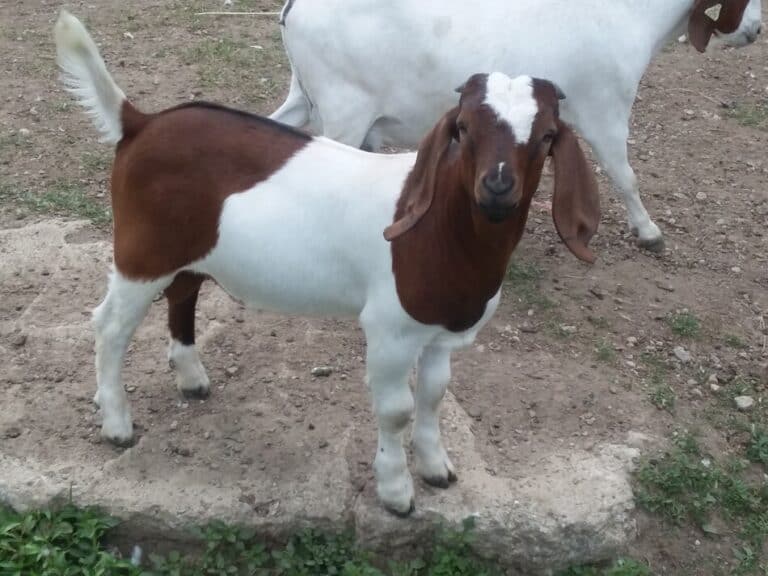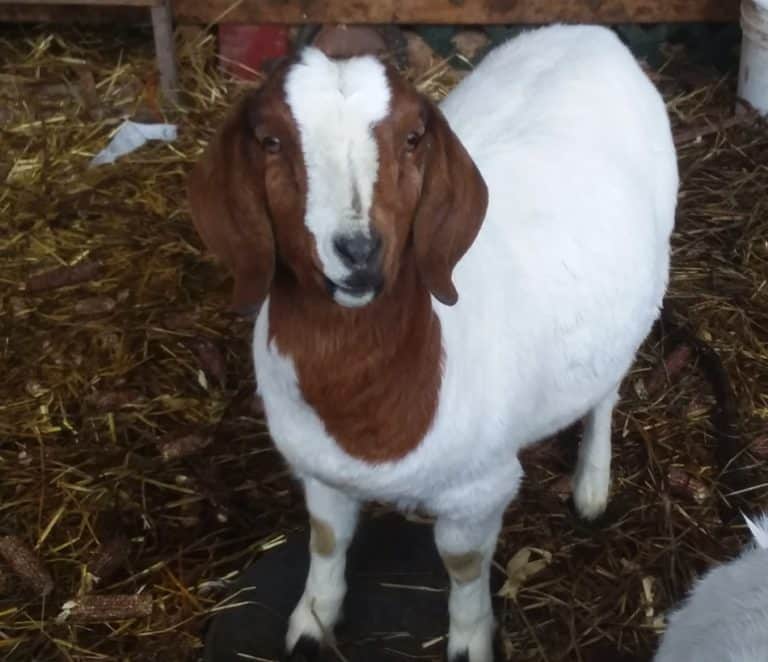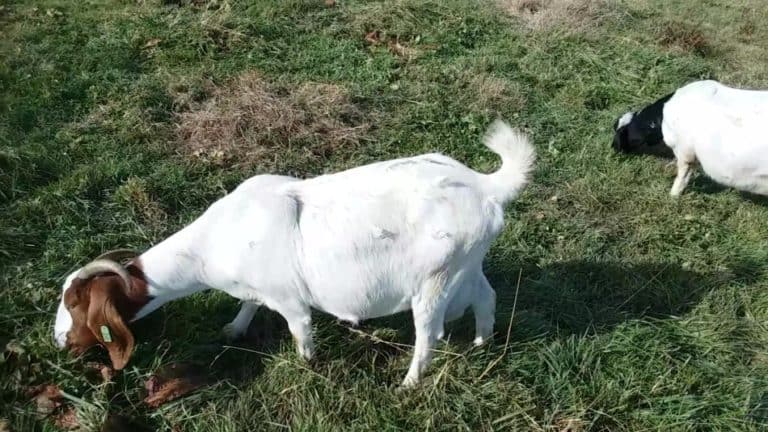How Much Time Do You Need To Raise Goats For Meat?
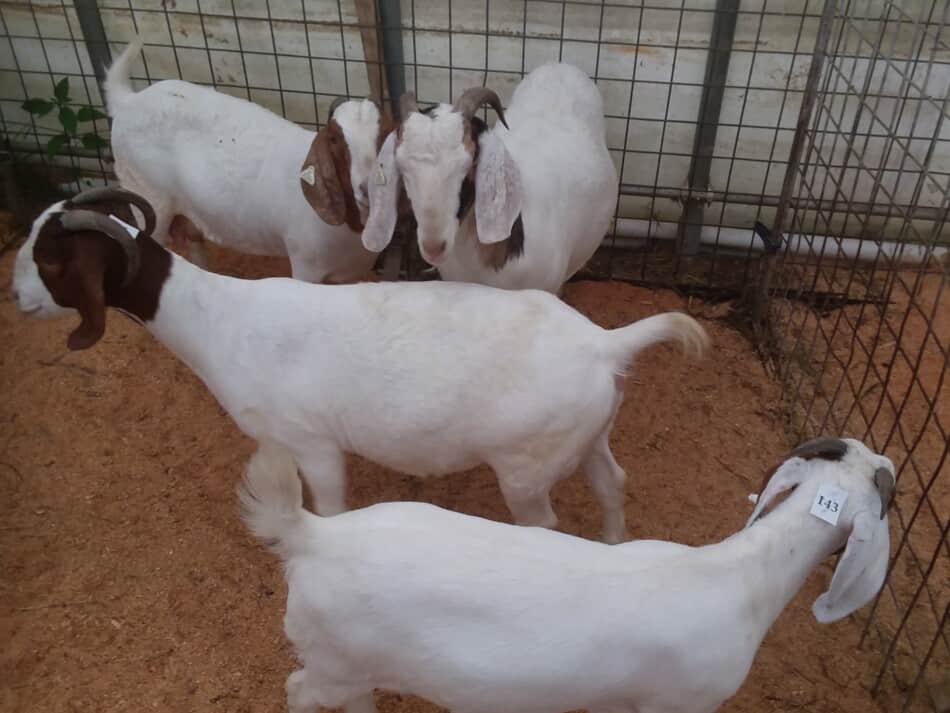
When you are looking to get into raising meat goats, and a lot of folks are, you’ll want to know how long it will take to raise those market kids to a sellable size and weight.
It will take 3 months to raise a Boer type meat goat to 50 pounds, while diary type meat goats will take 3-5 months. Bucklings and wethers will reach 50 pounds faster than doelings, with goat kids on full feed growing faster than kids that are not on full feed.
Goats are skyrocketing in popularity and are in high demand as a meat animal. Around here, the local auctions can’t seem to get enough of goats! They sell well every week!
This is super news for the new goat raiser, but it’s not very specific. How long will it take to get those babies to a marketable age? Well, not so surprisingly, it depends upon what you start with (genetics) and what you feed.
Best Breed of Meat Goats for Beginners is an article I wrote that will help you figure out which breed of goats will suit you and your situation the best.
Boer goat kids take 3 months to reach 50-60 pounds
Here are two tables to give you an idea of expected growth rates of goat kids. Notice the differences in weights for bucklings versus doelings and the differences in Boer (or other meat goat type kids) compared to dairy genetics.
| Age of Meat Goat Kid (Boer goats) | Weight of Buckling (in pounds) | Weight of Doeling (in pounds) |
| Weaned | 44-55 | 44-55 |
| 7 months | 88-110 | 75-100 |
| 12 months | 110-155 | 100-145 |
Dairy bucklings reach 50 pounds in 3 months
In our area, there are still quite a few dairy goats around. I know this is not the case everywhere, but here’s the numbers if you are one of the lucky areas that has access to high quality dairy goat kids.
The main difference in weights is due to the birth weights of bucklings, an average of 10 pounds, tending to be higher than doelings, with an average birth weight of 7 pounds, with multiple births being at lower weights, as well.
Additionally, the doeling chart stops at 12 months due to differences in the weight of the adult does.
| Age of Dairy Goat Kid (large breed goats) | Bucklings (weight in pounds) | Doelings (weight in pounds) |
| 1 month | 25 | 16 |
| 3 months | 55 | 34 |
| 6 months | 85 | 61 |
| 9 months | 110 | 88 |
| 12 months | 130 | 120 |
| 18 months | 155 | varies with breed |
| 24 months | 170 | varies with breed |
| 36 months | 205 | 130-170 |
Know the finishing weight you want for a butcher ready goat
You need to know the finishing weight you are targeting for your market kids. If you are thinking of a 50 pounder, as listed above, then those weights can be reached pretty quickly.
If you are thinking more in the 100 pound range, you’ll have some work to do, since goats in this weight range take longer. No suprise here, of course!
If your are planning on raising or selling market kids at higher weights, it does take significantly longer to get your money back from the sale of an older market kid compared to selling a younger market kid.
It could be that in your area, raising market kids to the higher weights makes sense. It depends on your customer and what they prefer and if it is economical for you.
Around here, goats of all sizes sell very well, with the Boer type genetics bringing more money than the dairy type kids
You will get 25-30% of the live weight back as goat meat
If you are planning to raise these goats for your own use, know that you’ll get between 25-30% of the live weight of the goat back in retail cuts.
The amount of meat you get from each goat depends partly upon how you structure your custom cutting orders with the butcher and on the meat to bone ratio of the market goats you raised.
Either way, expect 25-30% of live weight as meat and plan accordingly.
So, for easy math, a 100 pound live weight goat with good muscling will yield 25-30 pounds of meat, packaged for your freezer.
For this reason alone, if I were raising a few goats for meat I would be keeping them until they are closer to 100 pounds, simply because per goat you’ll get so much more meat.
If you are wanting to roast a whole goat, then smaller is probably more what you are looking for, but if you want larger retail type cuts in your freezer, plan on raising your goats to a larger size.
Buy feeder goats to get butcher goats sooner
If you are wanting to get your goat kids to market weights sooner, you can buy feeder goats. Feeder goats are weaned goat kids that are sold to someone else who will finish feeding them to market weight.
Feeder goats would be around two months old and completely weaned. If you choose to buy feeders, you will get a few ready to grow, weaned kids that will do the majority of their growing with you.
In my area, this is not a very economical option, usually the weaned kids sell very well. However, if feeders are available in your area for an economical price, these kids are a great way to grow your own meat goats for the summer.
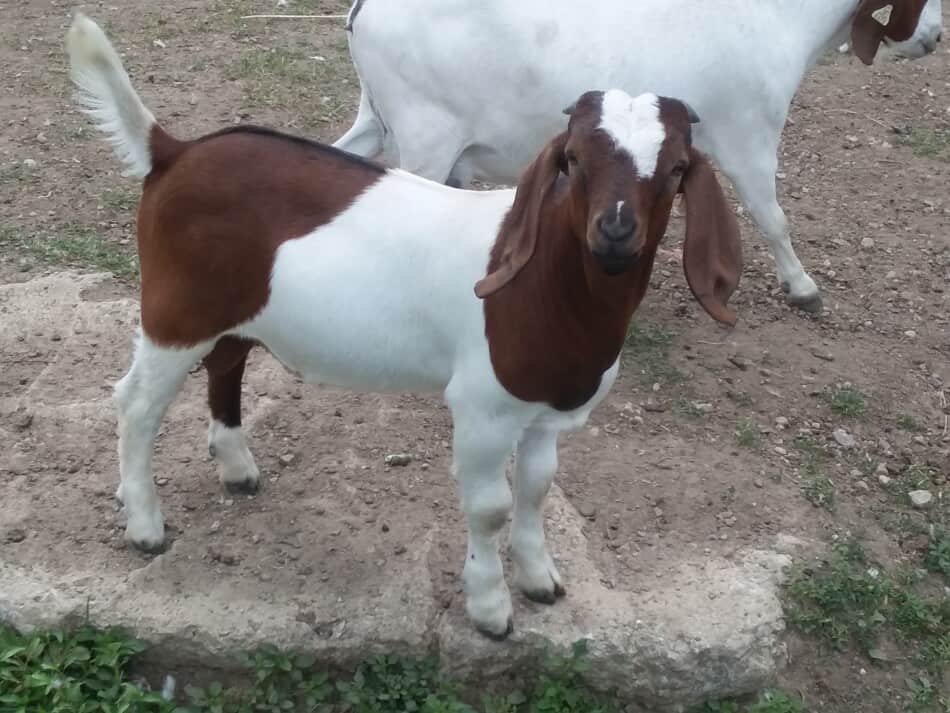
Goats born at your farm will take 3-6 months
If you have the meat kids born at your farm, you can have goats ready to sell or butcher in 3 months.
For that meat kid to be more like 80 pounds, you’ll be raising them to closer to the six month mark. If you are looking more for a dairy type market kid in the range of 65 pounds, it will take closer to 6 months
These numbers (50 pound kids by 3 months) are for high quality meat goat genetics with you providing all of the feed, not relying on grazing or foraging by the goats.
If the goats have to do more for themselves, you’ll need to substantially increase the time you have planned until the selling or butchering date.
Best Time To Sell Goats goes over your selling options and how to find the best time to sell for your specific area.
High rates of gain in your goat kids require high quality genetics
Additionally, remember that your goats will only grow to the best of their genetic abilities. If you want the best performance, get goats that are bred for your area and your planned management system.
By this I mean that if you want your meat kids to forage their way to butchering size, plan on them taking way longer, I’d guess double the time and be sure you are using adapted genetics to start with.
In some areas of the country, goat raisers are using their surplus dairy kids as meat goats. If the goats you have are more of a diary goat or dairy goat cross, count on your goats taking much longer to gain per day.
The same paper that had all of the data for the first chart has a section on comparing the daily gains from Boer goats to dairy goats. The differences are about twice the gains per day for the Boers vs the local dairy genetics.
Fast growing market kids need to be on full feed
The next thing to consider is feed. Your goats must be on full feed to achieve these gains per day and weights at these ages. Full feed means you are giving them everything they need to eat, they are finding nothing themselves.
If you are not providing a full feed ration for your goats, you will not get these weights and growth rates.
Current Selling Price Of Goats is written to help you figure out the current market prices for goats in your area. Even if you are privately selling your goats, it’s still a great idea to know what the market price is.
Goats will finish faster on feed
As mentioned above, any figures you are likely to see regarding growth of meat goats is based on these goats being on a full feed ration.
They may be on a pasture to graze or forage, as well, for exercise or added snacks to their main diet but the main source of calories for the growing kids is the feed provided by the farmer.
This is not to say that you need to feed your goats a full ration or even give them any grain, at all. But, if you want to see the results that are listed in these tables, grain feeding will be needed.
If you want to or need to raise goats without grain, that’s doable. As long as you start with goats that have the genetics to allow them to perform under a no grain system and plan on them taking longer to finish.
Goats eating browse alone will take longer to grow
Goats that are fed browse alone, or mostly browse, will take much longer to grow than goats that are being fed concentrates (grain or pellets).
This is a normal time period for goat kid growth, keeping goats in confinement or providing all of their feed ration to them is historically not normal for goats, it’s just what most of us do, now.
I don’t have a figure for the time it will take to get a goat kid to a good size on foraging alone. If I had to guess, I would say close 8 or 9 months and that the weights are, of course, going to be lower than those of fed goats.
Want a look at some goats being raised on 100% browse, check out Ziga Grazing, a goat vegetation management company based out of Tennessee. They advertise goats as your new groundskeepers!
Resources:
Boer Goat Production, Body weight and growth rate section, this is done is kilograms, I converted the weights to pounds by taking the weight in kilograms x 2.2 to get the weight in pounds
ADGA Care and Management of Dairy Goats, this article had the weights listed, I put them in table form
Sheep and Goat Marketing, How to Plan Your Breedings To Target Specific Holidays, this article has the basic calculations based on likely rate of gain and age, I did the calculations
